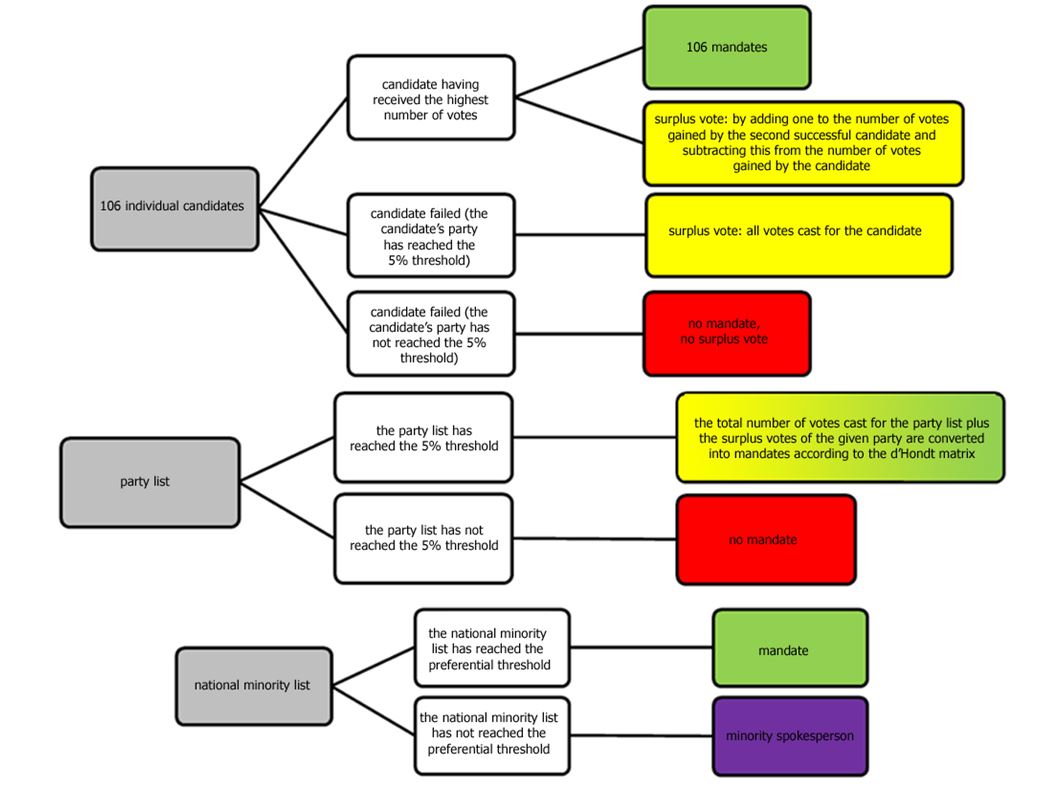Distributing mandates - National Election Office
- How do votes turn into mandates?
- During this one-round election, 199 members of the National Assembly are elected. 106 are elected in single member constituencies, whereas 93 are elected from national lists (which include party lists and national minority lists).
- The following chart shows you how votes for individual candidates, party lists and national minority lists turn into mandates. (Note that if two parties put forward a joint list, the threshold is 10%, if more than two parties do so, it is 15%.)
- What does d’Hondt matrix mean?
- D’Hondt matrix is a formula invented by the Belgian mathematician Victor d’Hondt which is used to convert votes into mandates in several countries in the world.
- Votes cast for each party are divided by one, two, three, four etc., then the numbers gained this way are put in decreasing order and in each row as many numbers are selected (always looking for the next bigger number) as there are mandates to be distributed.
- You can find an example below how 100 votes are converted into 12 mandates. (That is the 40 votes of party “A” result in 5 mandates, the 30 votes of party “B” result in 4 mandates, the 20 votes of party “C” result in 2 mandates, and the 10 votes of party “D” result in 1 mandate).
party A
40 votes
party B
30 votes
party C
20 votes
party D
10 votes
1
40/1 = 40,00
30/1 = 30,00
20/1 = 20,00
10/1 = 10,00
2
40/2 = 20,00
30/2 = 15,00
20/2 = 10,00
10/2 = 5,00
3
40/3 = 13,33
30/3 = 10,00
20/3 = 6,67
10/3 = 3,33
4
40/4 = 10,00
30/4 = 7,50
20/4 = 5,00
10/4 = 2,50
5
40/5 = 8,00
30/5 = 6,00
20/5 = 4,00
10/5 = 2,00
6
40/6 = 6,67
30/6 = 5,00
20/6 = 3,33
10/6 = 1,67

